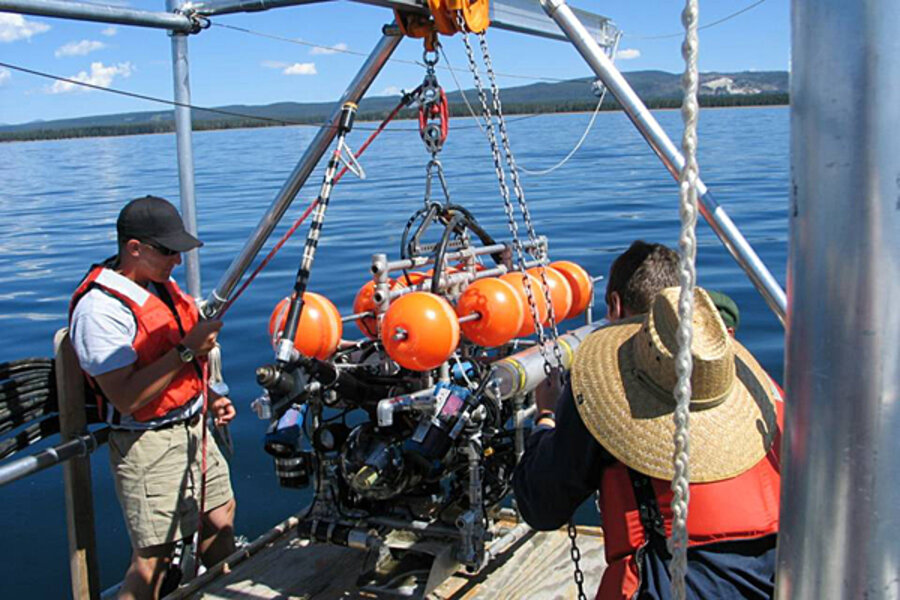Yellowstone Lake yields thriving colony of life at bottom
Loading...
| Bozeman, Mont.
What was believed to be a simple Yellowstone Lake ecosystem limited by the frigid snowmelt that feeds the lake actually contains thousands of species living off nutrients provided by geothermal features below the surface, researchers have found.
Montana State University researchers using a remotely operated vehicle recently discovered a thriving colony of moss, shrimp and aquatic worms centered around a geothermal vent about 100 feet below the surface.
John Varley, head of MSU's Big Sky Institute, said Tuesday the discovery reveals a greater diversity of life than what was previously thought to exist in the lake at the center of Yellowstone National Park.
Trout, plankton and other species live in the lake, but the diversity of the ecosystem was always believed to be limited because the water that flows into the lake is like distilled water, devoid of the minerals that are the building blocks of life.
IN PICTURES: Yellowstone National Park
"It was always thought of as a very simple ecosystem, and that made sense because its entire drainage is made up of snowmelt that travels over relatively insoluble volcanic rocks," Varley said. "But it's not a simple ecosystem. There are thousands of species in there, some of which are associated with the cold water, some of which are associated with the hot water."
The water around the recently discovered colony is about 90 degrees Fahrenheit, whereas the surface of the lake rarely gets above 64 degrees. The colony lives in near-total darkness, and the vent apparently emits minerals and nutrients that allow the moss to live in low-light conditions. The shrimp and worms, in turn, feed off the moss.
Such colonies are unable expand very far because of the rapid drop in water temperature outside the radius of warmth provided by the geothermal features, Varley said. Plus, the type of life depends on the water temperature: Many vents have temperatures near or exceeding boiling, providing conditions suitable for microbes, whereas the cooler temperatures can support the higher forms such as shrimp and worms.
About 600 vents and other geothermal features are on the floor of the massive lake, few of which have been explored, Varley said. That means there is the possibility for all kinds of diverse life in such oases scattered across the lake's floor, previously thought to have very limited or no life at all.
Varley said this is just the beginning of research into the different types of habitats that may exist in Yellowstone Lake.
"I'm guessing there are infinite numbers of habitats down on the bottom of the lake, and we're just scratching the surface," he said.





